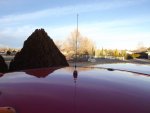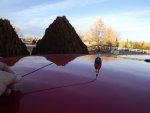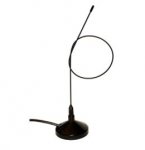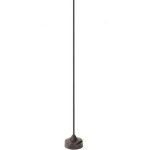crawler#976
Expedition Leader
Since I moved the antenna from the d'side fender to the center of the roof, I've been beating it to death with low hanging branches. In reality, it gets hit less than the fender mount did, but when it does, it really gets whacked.
I already had a Pryme RD-98 SMA antenna for the HT, so all that was needed was adapters to use it for the roof mounted NMO connection. I ordered a Comet UHF to NMO adapter and a SMA female to UHF male adapter. When assembled it is shorter than the Larsen NMO 2/70 coil, and the highly flexible RD-98 will easily bend away form overhead obstacles.
Getting good signal reports - full quieting into the repeater about 16 miles away, and simplex reports of decent audio at a 20 mile range into a full tower setup, both at 5W output.
Only draw back is with the RD-98 I am limited to under 20 watts power. That's OK, since for most trail rides I use 5W anyway.
INFO:
RD-98 antenna http://www.hamradio.com/detail.cfm?pid=H0-001847
Comet UHF-MNO adaptor http://www.hamradio.com/detail.cfm?pid=H0-001411
SMA-UHF adaptor http://www.hamradio.com/detail.cfm?pid=H0-009348
I already had a Pryme RD-98 SMA antenna for the HT, so all that was needed was adapters to use it for the roof mounted NMO connection. I ordered a Comet UHF to NMO adapter and a SMA female to UHF male adapter. When assembled it is shorter than the Larsen NMO 2/70 coil, and the highly flexible RD-98 will easily bend away form overhead obstacles.
Getting good signal reports - full quieting into the repeater about 16 miles away, and simplex reports of decent audio at a 20 mile range into a full tower setup, both at 5W output.
Only draw back is with the RD-98 I am limited to under 20 watts power. That's OK, since for most trail rides I use 5W anyway.
INFO:
RD-98 antenna http://www.hamradio.com/detail.cfm?pid=H0-001847
Comet UHF-MNO adaptor http://www.hamradio.com/detail.cfm?pid=H0-001411
SMA-UHF adaptor http://www.hamradio.com/detail.cfm?pid=H0-009348
Attachments
Last edited:




